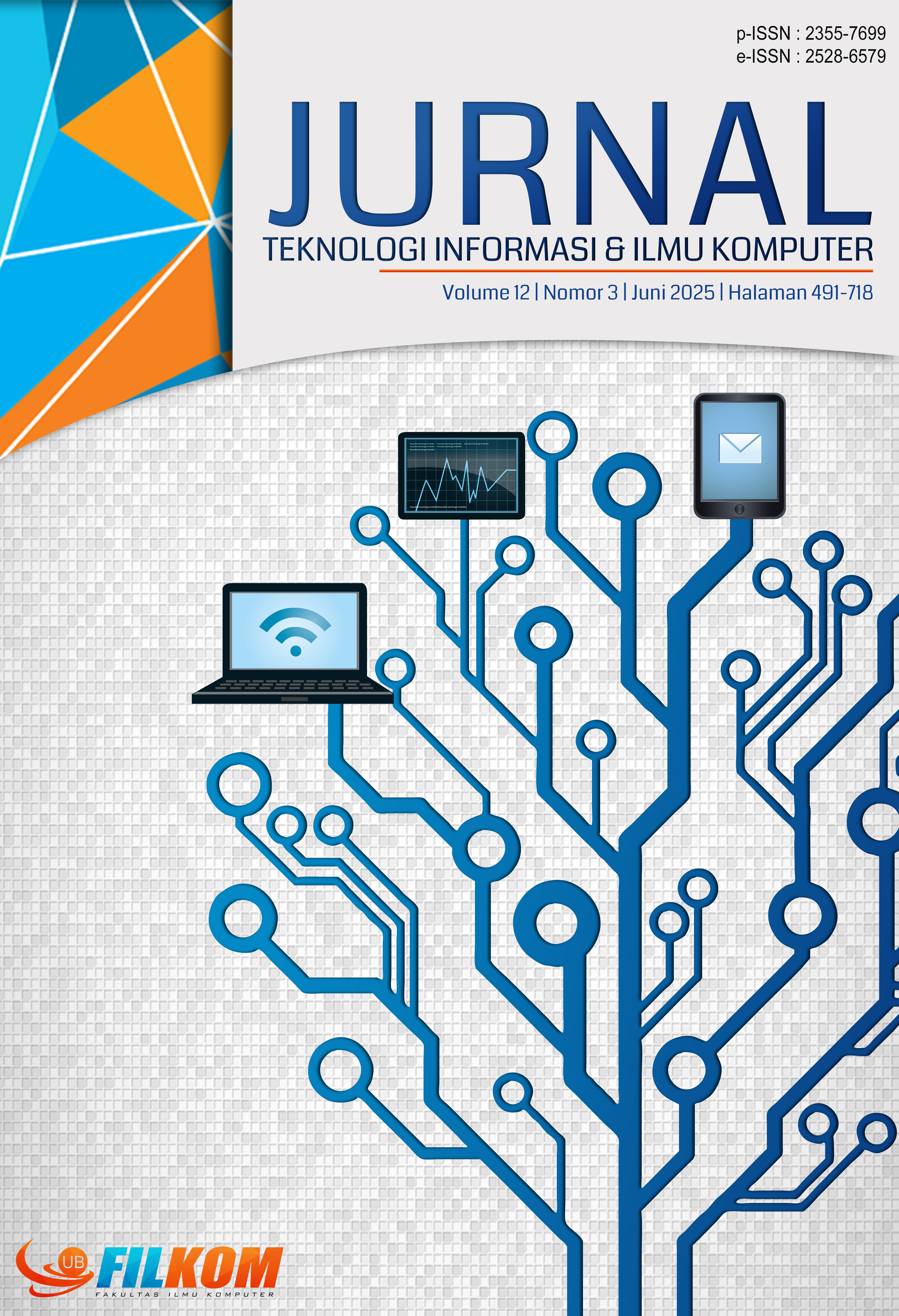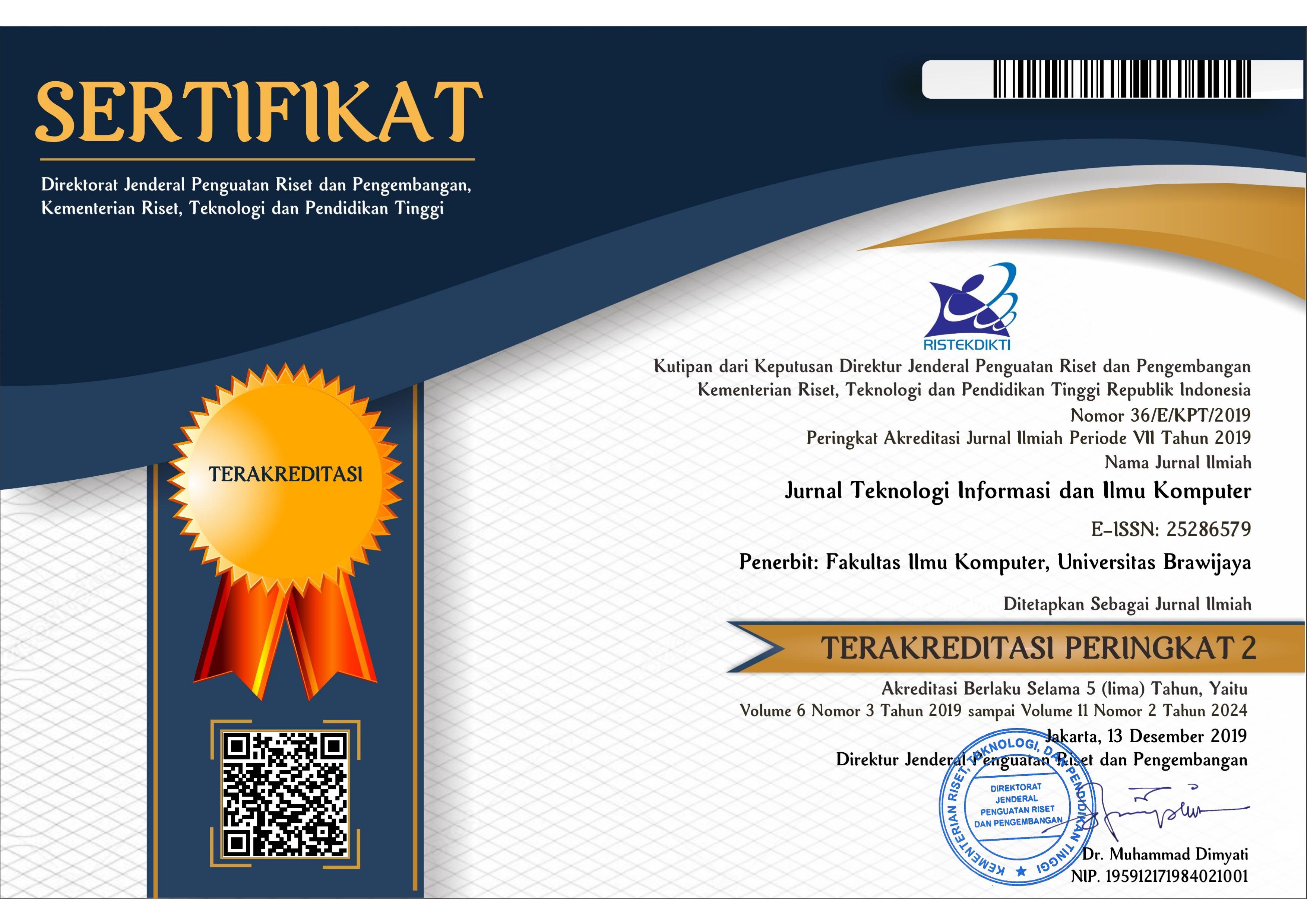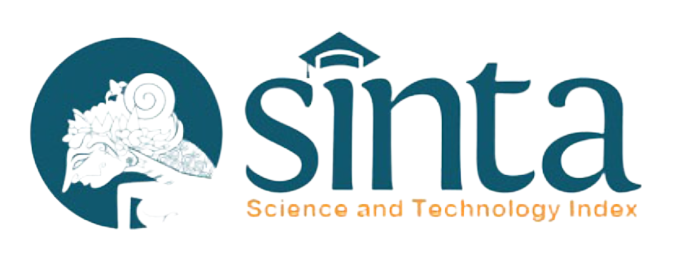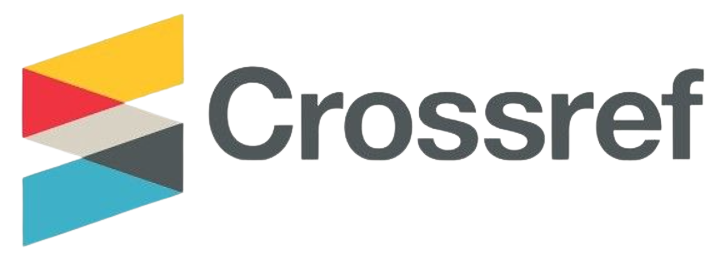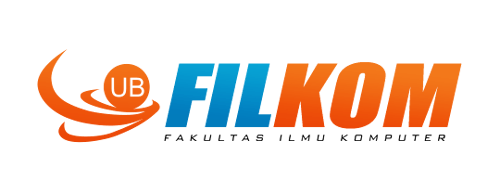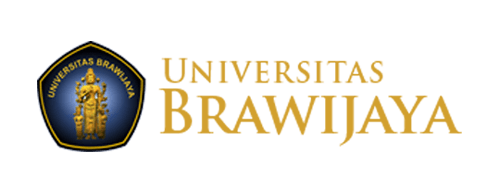Kekuatan Dampak Direct Instruction Berbantuan Teknologi Informasi Terhadap Hasil Belajar Pengetahuan Prosedural Dan Kemandirian Belajar Pada Subjek Pemrograman Komputer
DOI:
https://doi.org/10.25126/jtiik.2025129552Kata Kunci:
direct instruction, information technology, learning outcomes, self-regulated learning, procedural knowledge, computer programmingAbstrak
Penelitian ini menganalisis kekuatan dampak implementasi pembelajaran Direct Instruction (DI) berbantuan teknologi informasi terhadap hasil belajar dan kemandirian belajar pengetahuan prosedural pada subjek pemrograman komputer. Tujuan tersebut dipicu oleh keterbatasn teori saat ini yang mampu menunjukkan seberapa besar dampak DI berbantuan teknologi informasi pada konteks bidang studi teknologi informasi. Teknologi informasi yang digunakan mencakup Learning Management System (LMS) dan konten pembelajaran digital interaktif. Subjek penelitian adalah siswa Sekolah Menengah Kejuruan (SMK), yang dibagi menjadi kelompok eksperimen dan kontrol, masing-masing terdiri dari 80 siswa. Kelompok eksperimen menerapkan metode pembelajaran DI dengan dukungan teknologi informasi, sedangkan kelompok kontrol menggunakan metode pembelajaran DI tanpa dukungan teknologi. Data hasil belajar diperoleh melalui tes kinerja, sementara data kemandirian belajar dikumpulkan menggunakan kuesioner. Desain penelitian eksperimen adalah Static-Group Pretest-Posttest tanpa mekanisme random selection dan random assignment. Desain tersebut dipilih karena posisi subjek penelitian tidak memungkinkan diatur ulang secara sepihak oleh peneliti. Hasil penelitian menunjukkan bahwa pembelajaran DI berbantuan teknologi informasi memiliki kekuatan dampak yang signifikan terhadap hasil belajar dan kemandirian belajar siswa. Namun demikian, implementasi DI berbantuan teknologi informasi memiliki kekuatan dampak yang lebih besar terhadap kemandirian belajar (t(158) = 26,152, p < 0,001, d = 4,09) dibandingkan dengan hasil belajar (t(158) = 21,152, p < 0,001, d = 3,29).
Abstract
This study analyzes the impact of implementing direct instruction assisted by information technology on learning outcomes and self-regulated learning of procedural knowledge within the computer programming subject. The objective is prompted by the limitations of current theories in demonstrating the extent of the impact of technology-assisted direct instruction within the context of information technology subject. The information technology utilized includes a Learning Management System (LMS) and interactive digital learning content. The research subjects were vocational high school students, divided into experimental and control groups, each consisting of 80 students. The experimental group applied the direct instruction method with the support of information technology, while the control group used the direct instruction method without technological support. Learning outcomes data were obtained through performance tests, while self-regulated learning data were collected using questionnaires. The experimental design was a Static-Group Pretest-Posttest without random selection and random assignment mechanisms, chosen because the positions of the research subjects could not be rearranged unilaterally by the researcher. The results showed that direct instruction assisted by information technology had a significant impact on students' learning outcomes and self-regulated learning. However, the implementation of direct instruction with information technology support had a greater impact on self-regulated learning (t(158) = 26,152, p < 0.001, d = 4,09) compared to learning outcomes (t(158) = 21,152, p < 0,001, d = 3,29). These findings underscore the importance of integrating technology into face-to-face learning to enhance students' learning outcomes and self-regulated learning in procedural knowledge within the information technology domain.
Downloads
Referensi
AHMAD, N.A. et al. 2023. ‘Learning Management System Acceptance Factors for Technical and Vocational Education Training (TVET) Institutions’, TEM Journal, 12(2), pp. 1156–1165. Available at: https://doi.org/10.18421/TEM122-61.
ALPHONCE, S. & MWANTIMWA, K. 2019. ‘Students’ use of digital learning resources: diversity, motivations and challenges’, Information and Learning Science, 120(11–12), pp. 758–772. Available at: https://doi.org/10.1108/ILS-06-2019-0048.
ANDERSON, L.W. & KRATHWOHL, D.R. 2001. A Taxonomy for Learning, Teaching, and Assessing: A Revision of Bloom’s Taxonomy of Educational Objectives-Abridged Edition. Canada: Pearson Education.
ATKINSON, R.C. & SHIFFRIN, R.M. 1968. ‘Human Memory: A Proposed System and its Control Processes’, in, pp. 89–195. Available at: https://doi.org/10.1016/S0079-7421(08)60422-3.
BARNARD, L. et al. 2009. ‘Measuring self-regulation in online and blended learning environments’, The Internet and Higher Education, 12(1), pp. 1–6. Available at: https://doi.org/10.1016/j.iheduc.2008.10.005.
BEDARD, C. et al. 2018. ‘Evaluation of a direct-instruction intervention to improve movement and preliteracy skills among young children: A within-subject repeated-measures design’, Frontiers in Pediatrics, 5. Available at: https://doi.org/10.3389/fped.2017.00298.
BILLETT, S. 2011. Vocational Education, The Jim Crow Encyclopedia: Volume 1, 2. Dordrecht: Springer Netherlands. Available at: https://doi.org/10.1007/978-94-007-1954-5.
BROADBENT, J. & POON, W.L. 2015. ‘Self-regulated learning strategies & academic achievement in online higher education learning environments: A systematic review’, The Internet and Higher Education, 27, pp. 1–13. Available at: https://doi.org/10.1016/j.iheduc.2015.04.007.
CHEN, O. et al. 2018. ‘Extending Cognitive Load Theory to Incorporate Working Memory Resource Depletion: Evidence from the Spacing Effect’, Educational Psychology Review, 30(2), pp. 483–501. Available at: https://doi.org/10.1007/s10648-017-9426-2.
CHEN, Y.F. et al. 2018. ‘Effects of the application of computer multimedia teaching to automobile vocational education on students’ learning satisfaction and learning outcome’, Eurasia Journal of Mathematics, Science and Technology Education, 14(7), pp. 3293–3300. Available at: https://doi.org/10.29333/ejmste/91245.
CLARK, R.C. & KWINN, A. 2007. The new virtual classroom: Evidence-based guidelines for synchronous e-learning. Canada: Pfeiffer. Available at: http://ovidsp.ovid.com/ovidweb.cgi?T=JS&PAGE=reference&D=psyc5&NEWS=N&AN=2007-07797-000.
CLARK, R.C. & LYONS, C. 2011. Graphics for Learning: Proven Guidelines for Planning, Designing, and Evaluating Visuals in Training Materials. CA: Pfeiffer.
CLARK, R.C. & MAYER, R.E. 2016. e-Learning and The Science of Instruction: Proven Guidelines for Consumers and Designers of Multimedia Learning. New Jersey: Wiley and Sons, Inc.
COHEN, J. 1988. Statistical Power Analysis for the Behavioral Sciences. 2nd edn. New York: Lawrence Erlbaum Associates.
DO, H.T.H. et al. 2023. ‘Impact of Vocational Education and Training On Decent Job Opportunities Regarding Information and Communication Technology’, Journal of Technical Education and Training, 15(1), pp. 73–84. Available at: https://doi.org/10.30880/jtet.2023.15.01.007.
EITEL, A., ENDRES, T. & RENKL, A. 2020. ‘Self-management as a Bridge Between Cognitive Load and Self-regulated Learning: the Illustrative Case of Seductive Details’, Educational Psychology Review, 32(4), pp. 1073–1087. Available at: https://doi.org/10.1007/s10648-020-09559-5.
EPPLEY, K. & DUDLEY-MARLING, C. 2019. ‘Does direct instruction work?: A critical assessment of direct instruction research and its theoretical perspective’, Journal of Curriculum and Pedagogy, 16(1), pp. 35–54. Available at: https://doi.org/10.1080/15505170.2018.1438321.
ERATAY, E. 2020. ‘Effectiveness of the direct instruction method in teaching leisure skills to young individuals with intellectual disabilities’, International Electronic Journal of Elementary Education, 12(5), pp. 439–451. Available at: https://doi.org/10.26822/iejee.2020562134.
ERTMER, P.A. & NEWBY, T.J. 2013. ‘Behaviorism, Cognitivism, Constructivism: Comparing Critical Features From an Instructional Design Perspective’, Performance Improvement Quarterly, 26(2), pp. 43–71. Available at: https://doi.org/10.1002/piq.21143.
FRAENKEL, J.R., WALLEN, N.E. & HYUN, H.H. 2022. How to Design and Evaluate Research in Education. New York: McGraw Hill LLC. Available at: https://www.mheducation.com/highered/product/how-design-evaluate-research-education-fraenkel-wallen/M9781259913839.html (Accessed: 27 June 2023).
VAN DER GRAAF, J. et al. 2019. ‘A combined approach to strengthen children’s scientific thinking: direct instruction on scientific reasoning and training of teacher’s verbal support’, International Journal of Science Education, 41(9), pp. 1119–1138. Available at: https://doi.org/10.1080/09500693.2019.1594442.
AL HASHLAMOUN, N. & DAOUK, L. 2020. ‘Information technology teachers’ perceptions of the benefits and efficacy of using online communities of practice when teaching computer skills classes’, Education and Information Technologies, 25(6), pp. 5753–5770. Available at: https://doi.org/10.1007/s10639-020-10242-z.
HERLAMBANG, A.D., BUDIMAN, B. & WARDHONO, W.S. 2022. ‘Interactive Procedural Knowledge Learning Resources Development in The Context of Competency-Based Training Instructional Approach and Interactive Media Design Subjects for Information Technology Vocational High School’, Elinvo (Electronics, Informatics, and Vocational Education); Vol 7, No 1 (2022): Mei 2022DO - 10.21831/elinvo.v7i1.48215 [Preprint]. Available at: https://doi.org/https://doi.org/10.21831/elinvo.v7i1.48215.
HERLAMBANG, A.D., FRANSISCA, O.D. & AFIRIANTO, T. 2023. ‘The Flipped-Classroom Instructional Procedure Development and Its Implementation Effectiveness in Improving Procedural Knowledge Learning Outcomes at Vocational High Schools’, Elinvo (Electronics, Informatics, and Vocational Education), 8(2), pp. 2477–2399.
HERLAMBANG, A.D., RIRIN, R. & RACHMADI, A. 2024. ‘The flipped-classroom effect on vocational high school students’ learning outcomes’, International Journal of Evaluation and Research in Education (IJERE), 13(3), p. 1807. Available at: https://doi.org/10.11591/ijere.v13i3.26757.
HERMAWAN, C.M. et al. 2020. ‘The effectiveness of direct instruction model in mathematics subjects: A classroom action research in elementary school’, International Journal of Scientific and Technology Research, 9(4), pp. 2506–2509. Available at: https://api.elsevier.com/content/abstract/scopus_id/85084412038.
HERZOG, M.H., FRANCIS, G. & CLARKE, A. 2019. Understanding Statistics and Experimental Design. Cham: Springer International Publishing (Learning Materials in Biosciences). Available at: https://doi.org/10.1007/978-3-030-03499-3.
JIANG, X., XU, J. & XU, X. 2024. ‘An overview of domestic and international applications of digital technology in teaching in vocational education: Systematic literature mapping’, Education and Information Technologies [Preprint]. Available at: https://doi.org/10.1007/s10639-024-12528-y.
DE JONG, T. et al. 2023. ‘Let’s talk evidence – The case for combining inquiry-based and direct instruction’, Educational Research Review. Available at: https://doi.org/10.1016/j.edurev.2023.100536.
JOSSBERGER, H. et al. 2020. ‘Exploring Students’ Self-Regulated Learning in Vocational Education and Training’, Vocations and Learning, 13(1), pp. 131–158. Available at: https://doi.org/10.1007/s12186-019-09232-1.
KALYUGA, S. et al. 2003. ‘The expertise reversal effect’, Educational Psychologist, 38(1), pp. 23–31. Available at: https://doi.org/10.1207/S15326985EP3801_4.
KIRSCHNER, P.A. et al. 2018. ‘From Cognitive Load Theory to Collaborative Cognitive Load Theory’, International Journal of Computer-Supported Collaborative Learning, 13(2), pp. 213–233. Available at: https://doi.org/10.1007/s11412-018-9277-y.
KORDAHI, M.M. 2022. ‘Ontology for the User-Learner Profile Personalizes the Search Analysis of Online Learning Resources: The Case of Thematic Digital Universities’, Information Technology and Libraries, 41(2). Available at: https://doi.org/10.6017/ITAL.V41I2.13601.
LITTENBERG-TOBIAS, J. & REICH, J. 2020. ‘Evaluating access, quality, and equity in online learning: A case study of a MOOC-based blended professional degree program’, Internet and Higher Education, 47. Available at: https://doi.org/10.1016/j.iheduc.2020.100759.
MOSES, M.P. 2024. ‘CHATGPT4 (AI) shaping the future of medical laboratory sciences by improving teaching, learning, and assessment’, Journal of Advanced Pharmacy Education and Research, 14(1), pp. 52–55. Available at: https://doi.org/10.51847/Jv9y7qjMA7.
MUBAI, A. et al. 2023. ‘Flipped Direct Instruction (FDI): A New Practicum Learning Model in Vocational Education’, International Journal of Learning, Teaching and Educational Research, 22(7), pp. 547–565. Available at: https://doi.org/10.26803/ijlter.22.7.29.
MUIJS, D. & REYNOLDS, D. 2017. Effective Teaching: Evidence and Practice. London: SAGE Publications Ltd. Available at: https://uk.sagepub.com/en-gb/eur/effective-teaching/book246706.
MUNYARADZI, M., MILDRED, D.M. & DAVID, A. 2024. ‘Engaging Students Online: Readiness of Lecturers to Use Learning Management System (LMS) at a Technical Vocational Education and Training College’, Community College Journal of Research and Practice, 48(6), pp. 369–385. Available at: https://doi.org/10.1080/10668926.2022.2135043.
NUNNALLY, J.C. 1994. Psychometric Theory 3E. Tata McGraw-Hill Education (McGraw-Hill series in psychology). Available at: https://books.google.co.id/books?id=_6R_f3G58JsC.
OSHANOVA, N.T. et al. 2021. ‘Training future computer science teachers in the context of digitalisation based on the “history of informatics” course’, World Journal on Educational Technology: Current Issues, 13(3), pp. 354–369. Available at: https://doi.org/10.18844/wjet.v13i3.5919.
PAN, F. 2024. AI in language teaching, learning, and assessment, AI in Language Teaching, Learning, and Assessment. Available at: https://doi.org/10.4018/979-8-3693-0872-1.
PANADERO, E. 2017. ‘A review of self-regulated learning: Six models and four directions for research’, Frontiers in Psychology, 8(APR), p. 422. Available at: https://doi.org/10.3389/fpsyg.2017.00422.
PARDIMIN, ARCANA, N. & SUPRIADI, D. 2019. ‘Developing media based on the information and communications technology to improve the effectiveness of the direct instruction method in mathematics learning’, Journal for the Education of Gifted Young Scientists, 7(4), pp. 1311–1323. Available at: https://doi.org/10.17478/jegys.562636.
PIAGET, J. 1976. ‘Piaget’s Theory’, in B. Inhelder, H.H. Chipman, and C. Zwingmann (eds) Piaget and His School. Springer, pp. 11–23. Available at: https://doi.org/10.1007/978-3-642-46323-5_2.
PINTRICH, P.R. & DE GROOT, E. V. 1990. ‘Motivational and Self-Regulated Learning Components of Classroom Academic Performance’, Journal of Educational Psychology, 82(1), pp. 33–40. Available at: https://doi.org/10.1037/0022-0663.82.1.33.
ROBINS, A., ROUNTREE, J. & ROUNTREe, N. 2003. ‘Learning and teaching programming: A review and discussion’, International Journal of Phytoremediation, 21(1), pp. 137–172. Available at: https://doi.org/10.1076/csed.13.2.137.14200.
SHABANI, K., KHATIB, M. & EBADI, S. 2010. ‘Vygotsky’s Zone of Proximal Development: Instructional Implications and Teachers’ Professional Development’, English Language Teaching, 3(4). Available at: https://doi.org/10.5539/elt.v3n4p237.
SHIN, Y. et al. 2023. ‘The Effects of Worked-Out Example and Metacognitive Scaffolding on Problem-Solving Programming’, Journal of Educational Computing Research, 61(6), pp. 1312–1331. Available at: https://doi.org/10.1177/07356331231174454.
SIDDIQ, F., SCHERER, R. & TONDEUR, J. 2016. ‘Teachers’ emphasis on developing students’ digital information and communication skills (TEDDICS): A new construct in 21st century education’, Computers & Education, 92–93, pp. 1–14. Available at: https://doi.org/10.1016/j.compedu.2015.10.006.
STOCKARD, J. et al. 2018. ‘The Effectiveness of Direct Instruction Curricula: A Meta-Analysis of a Half Century of Research’, Review of Educational Research, 88(4), pp. 479–507. Available at: https://doi.org/10.3102/0034654317751919.
STOCKARD, J. 2020. ‘The Impact of Administrative Decisions on Implementation Fidelity of Direct Instruction and Student Achievement’, Learning Disability Quarterly, 43(1), pp. 18–28. Available at: https://doi.org/10.1177/0731948719830346.
STOCKARD, J. 2021. ‘Building a More Effective, Equitable, and Compassionate Educational System: The Role of Direct Instruction’, Perspectives on Behavior Science, 44(2–3), pp. 147–167. Available at: https://doi.org/10.1007/s40614-021-00287-x.
SWELLER, J. 1988. ‘Cognitive Load During Problem Solving: Effects on Learning’, Cognitive Science, 12(2), pp. 257–285. Available at: https://doi.org/10.1207/s15516709cog1202_4.
SWELLER, J., VAN MERRIËNBOER, J.J.G. & PAAS, F. 2019. ‘Cognitive Architecture and Instructional Design: 20 Years Later’, Educational Psychology Review, 31(2), pp. 261–292. Available at: https://doi.org/10.1007/s10648-019-09465-5.
TABER, K.S. 2018. ‘The Use of Cronbach’s Alpha When Developing and Reporting Research Instruments in Science Education’, Research in Science Education, 48(6), pp. 1273–1296. Available at: https://doi.org/10.1007/s11165-016-9602-2.
VYGOTSKY, L.S. 1978. Social Constructivism - Mind in Society: The Development of Higher Psychological Processes, Full-Text. (N.D.). Harvard University Press. Available at: https://autismusberatung.info/wp-content/uploads/2023/09/Vygotsky-Mind-in-society.pdf.
WAHYUNI, S. et al. 2019. ‘Edmodo-Based Blended Learning Model as an Alternative of Science Learning to Motivate and Improve Junior High School Students’ Scientific Critical Thinking Skills’, International Journal of Emerging Technologies in Learning (iJET), 14(07), p. 98. Available at: https://doi.org/10.3991/ijet.v14i07.9980.
WALLACE, B., KNUDSON, D. & GHEIDI, N. 2020. ‘Incorporating problem-based learning with direct instruction improves student learning in undergraduate biomechanics’, Journal of Hospitality, Leisure, Sport and Tourism Education, 27. Available at: https://doi.org/10.1016/j.jhlste.2020.100258.
WANG, J. 2020. ‘Compare Inquiry-Based Pedagogical Instruction with Direct Instruction for Pre-service Science Teacher Education’, International Journal of Science and Mathematics Education, 18(6), pp. 1063–1083. Available at: https://doi.org/10.1007/s10763-019-10010-7.
WEI, H. 2024. ‘Research on Development of Higher Vocational Education Resources and Construction of Management System under Learning Migration Theory’, Applied Mathematics and Nonlinear Sciences, 9(1). Available at: https://doi.org/10.2478/amns-2024-0521.
WENG, C. et al. 2023. ‘Can an augmented reality-integrated gamification approach enhance vocational high school students’ learning outcomes and motivation in an electronics course?’, Education and Information Technologies [Preprint]. Available at: https://doi.org/10.1007/s10639-023-11966-4.
YAHAYA, W.A.J.W., RESTU, R. & SRIADHI, S. 2024. ‘Multimedia-based Information System for Technology and Vocational Education Laboratory’, Profesional de la Informacion, 33(1). Available at: https://doi.org/10.3145/epi.2024.0012.
YUNIARTI, N. et al. 2024. ‘Augmented reality-based higher order thinking skills learning media: Enhancing learning performance through self-regulated learning, digital literacy, and critical thinking skills in vocational teacher education’, European Journal of Education [Preprint]. Available at: https://doi.org/10.1111/ejed.12725.
ZALUKHU, P. & TELAUMBANUA, A. 2023. ‘Application of Direct Instruction Learning Model to Improve Student Learning Outcomes on Basic Competencies Implementing Wood Construction Work Procedures at SMK Negeri 1 Lotu for the 2022/2023 Academic Year’, AURELIA: Jurnal Penelitian dan Pengabdian Masyarakat Indonesia, 2(2), pp. 971–978. Available at: https://doi.org/10.57235/aurelia.v2i2.750.
ZAMBRANO R., J. et al. 2019. ‘Effects of prior knowledge on collaborative and individual learning’, Learning and Instruction, 63, p. 101214. Available at: https://doi.org/10.1016/j.learninstruc.2019.05.011.
ZENDLER, A. & KLEIN, K. 2018. ‘The effect of direct instruction and web quest on learning outcome in computer science education’, Education and Information Technologies, 23(6), pp. 2765–2782. Available at: https://doi.org/10.1007/s10639-018-9740-4.
ZIMMERMAN, B.J. 2002. ‘Becoming a Self-Regulated Learner: An Overview’, Theory Into Practice, 41(2), pp. 64–70. Available at: https://doi.org/10.1207/s15430421tip4102
Unduhan
Diterbitkan
Terbitan
Bagian
Lisensi
Hak Cipta (c) 2025 Jurnal Teknologi Informasi dan Ilmu Komputer

Artikel ini berlisensiCreative Commons Attribution-ShareAlike 4.0 International License.

Artikel ini berlisensi Creative Common Attribution-ShareAlike 4.0 International (CC BY-SA 4.0)
Penulis yang menerbitkan di jurnal ini menyetujui ketentuan berikut:
- Penulis menyimpan hak cipta dan memberikan jurnal hak penerbitan pertama naskah secara simultan dengan lisensi di bawah Creative Common Attribution-ShareAlike 4.0 International (CC BY-SA 4.0) yang mengizinkan orang lain untuk berbagi pekerjaan dengan sebuah pernyataan kepenulisan pekerjaan dan penerbitan awal di jurnal ini.
- Penulis bisa memasukkan ke dalam penyusunan kontraktual tambahan terpisah untuk distribusi non ekslusif versi kaya terbitan jurnal (contoh: mempostingnya ke repositori institusional atau menerbitkannya dalam sebuah buku), dengan pengakuan penerbitan awalnya di jurnal ini.
- Penulis diizinkan dan didorong untuk mem-posting karya mereka online (contoh: di repositori institusional atau di website mereka) sebelum dan selama proses penyerahan, karena dapat mengarahkan ke pertukaran produktif, seperti halnya sitiran yang lebih awal dan lebih hebat dari karya yang diterbitkan. (Lihat Efek Akses Terbuka).

